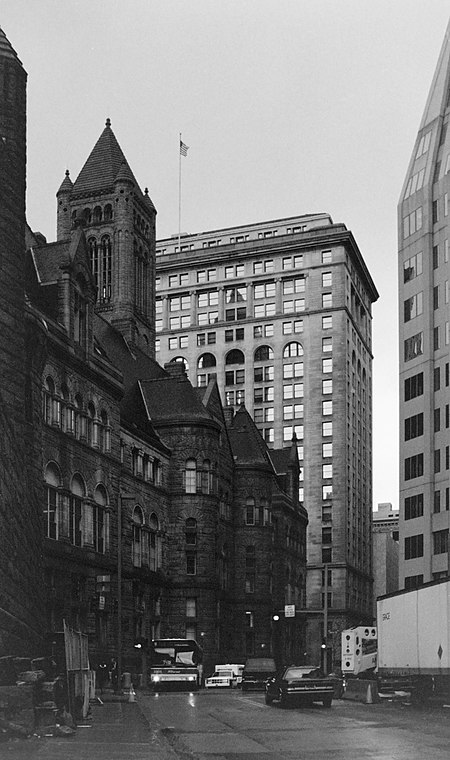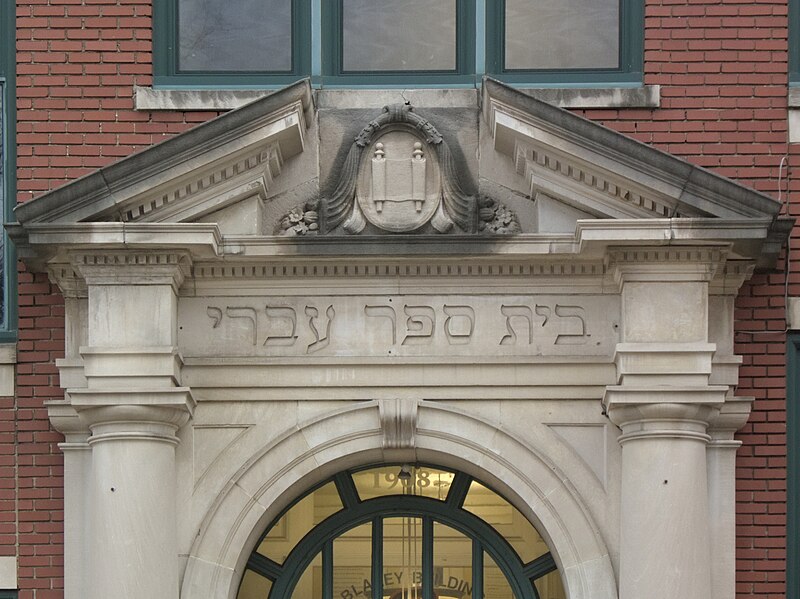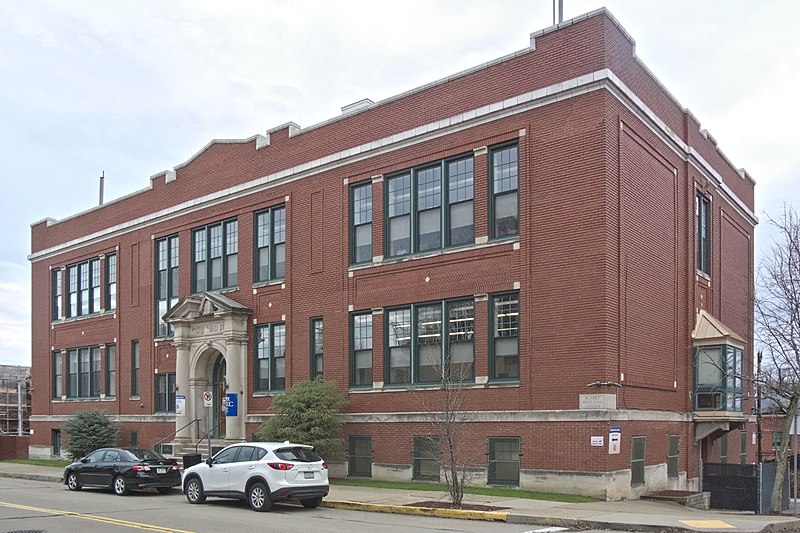
Taken on film in 1999. Note the bus coming toward you; apparently old Pa Pitt has been taking bus-coming-toward-you pictures for at least twenty-three years.

Update: Father Pitt regrets to say that this building has been demolished to make way for a much larger facility.
An elegant little classical firehouse, still in use as a medic station, on Lafayette Avenue at the corner of Federal Street. It dates from before 1910 and after 1903, according to the Pittsburgh Historic Maps site.


In the early twentieth century, the Hill was Pittsburgh’s most diverse neighborhood, and in particular it was the main center of Jewish culture. A number of buildings survive from the Jewish community there, though they have all been turned to other uses. This one, for example, is now a “community engagement center” run by the University of Pittsburgh. But it was the original home of the Hebrew Institute, which moved to Squirrel Hill in 1944. It was a school that taught Hebrew language, literature, and culture to Jewish children. The style of the building is typical Pittsburgh School Classical, but the broken pediment above the entrance frames a Torah scroll.




Addendum: The architect, according to a 1914 issue of the Construction Record, was Walter S. Cohen, who had a thriving practice serving mostly Jewish clients. “Architect Walter S. Cohen, Oliver building, has plans nearly completed for a two-story brick and stone institute building for the Hebrew Institute of Pittsburgh, Wylie avenue and Green street, to be built at a cost of $30,000.”

One of the little neighborhood libraries designed by Alden & Harlow, this one has a prime location on Grandview Avenue, making it possibly the library with the best view in the world.

Built in 1927, this Fourth Avenue tower was designed by John M. Donn, a Washington architect known for government buildings who seems not to have done anything else around here. (Update: This is incorrect; Donn also designed the Cathedral Mansions apartments in Shadyside.) The curious ornamental obelisks at the corners of the cap were the inspiration for Philip Johnson’s Tomb of the Unknown Bowler down the street.

